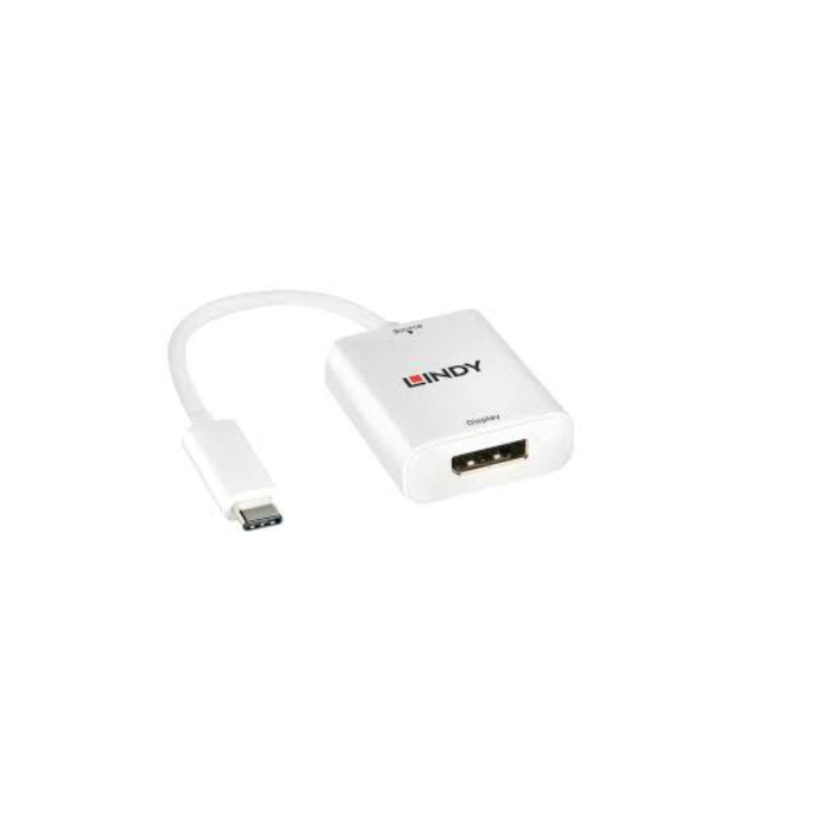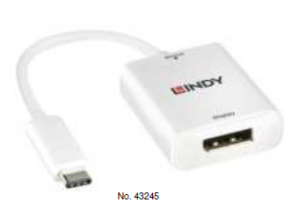LINDY Electronics USB Type C Video Converter User Manual
Introduction
Thank you for purchasing from the USB Video Converter series. This USB Type C Video Converter allows you to connect a monitor to your computer with a USB Type C connector with support for DisplayPort Alternate Mode. This product has been designed to provide trouble free, reliable operation. It benefits from both a Lindy 2 year warranty and free lifetime technical support. To ensure correct use, please read this manual carefully and retain it for future reference.
Package Contents
- USB Type C to Video (VGA / DVI / HDMI / DP) Converter
- This manual
Features
- Compatible with USB Type C equipped computers with DisplayPort Alternate Mode
- Input: USB Type C connector – male
- Output:o 43242: VGA femaleo 43243: DVI femaleo 43244: HDMI A femaleo 43245: DisplayPort female
- Max. resolutiono 43242/3: 1920 x o 43244: 3840 x 4:4:4o 43245: 3840 x
- Chipsets: 43242: IT6516, 43243/4: VL100 & PS171, 43245: VL100
- Powered via USB port
Installation
The DisplayPort Alternate Mode on the USB Type C connector standard uses the USB C connector as video output without the need for additional drivers or software.Connect the USB Type C connector of the adapter to the USB Type C socket of your computer and the video socket of the adapter to the video connector of your monitor using an appropriate male to male cable (not included).
Radio Frequency Energy, Certifications
CE CertificationLINDY declares that this equipment complies with relevant European CE requirements
UKCA CertificationLINDY declares that this equipment complies with relevant UKCA requirements.
FCC WarningThis equipment has been tested and found to comply with the limits for a Class B digital device, pursuant to part 15 of the FCC Rules. Operation is subject to the following twoconditions:
- This device may not cause harmful interference, and
- This device must accept any interference received, including interference that may cause undesired
 WEEE (Waste of Electrical and Electronic Equipment), Recycling of Electronic Products
WEEE (Waste of Electrical and Electronic Equipment), Recycling of Electronic Products
Recycling of Electronic ProductsEurope, United Kingdom In 2006 the European Union introduced regulations (WEEE) for the collection and recycling of all waste electrical and electronic equipment. It is no longer allowable to simply throw away electrical and electronic equipment. Instead, these products must enter the recycling process. Each individual EU member state, as well as the UK, has implemented the WEEE regulations into national law in slightly different ways. Please follow your national law when you want to dispose of any electrical or electronic products. More details can be obtained from your national WEEE recycling agency.
Read More About This Manual & Download PDF:
References
[xyz-ips snippet=”download-snippet”]



 WEEE (Waste of Electrical and Electronic Equipment), Recycling of Electronic Products
WEEE (Waste of Electrical and Electronic Equipment), Recycling of Electronic Products